Category
Recent Comments
Trending
-
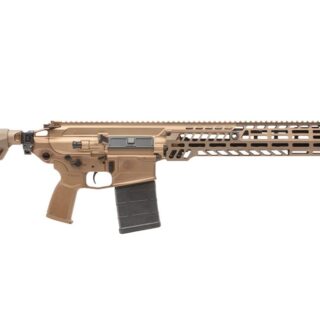 SIG Sauer MCX Virtus
Rated 0 out of 5
SIG Sauer MCX Virtus
Rated 0 out of 5$4,450.00Original price was: $4,450.00.$4,099.00Current price is: $4,099.00. -
 Heckler & Koch MR762A1
Rated 0 out of 5
Heckler & Koch MR762A1
Rated 0 out of 5$4,010.00Original price was: $4,010.00.$3,790.01Current price is: $3,790.01. -
 FN SCAR 17S
Rated 0 out of 5
FN SCAR 17S
Rated 0 out of 5$3,900.00Original price was: $3,900.00.$3,620.00Current price is: $3,620.00. -
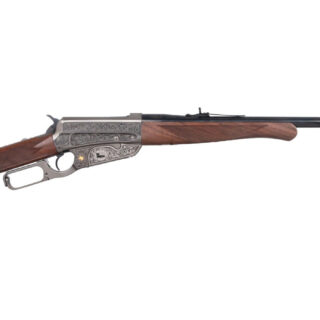 Winchester 1895 Texas Rangers 200th Anniversary Custom Grade 30-06 Springfield Rifle with Engraved Receiver and Walnut Stock
Rated 0 out of 5
Winchester 1895 Texas Rangers 200th Anniversary Custom Grade 30-06 Springfield Rifle with Engraved Receiver and Walnut Stock
Rated 0 out of 5$3,450.00Original price was: $3,450.00.$3,099.01Current price is: $3,099.01. -
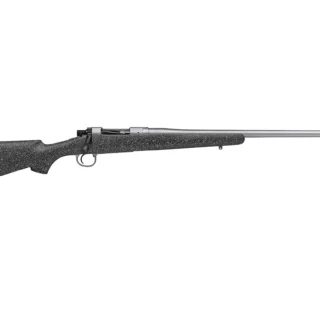 Nosler M21 Bolt Action Centerfire Rifle
Rated 0 out of 5
Nosler M21 Bolt Action Centerfire Rifle
Rated 0 out of 5$2,950.00Original price was: $2,950.00.$2,499.00Current price is: $2,499.00. -
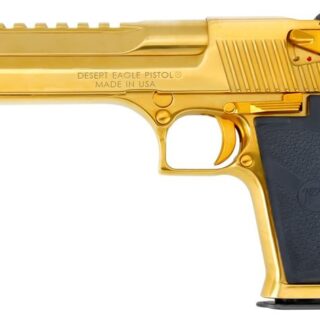 Desert Eagle Gold .50 A.E. MARK XIX TITANIUM GOLD
Rated 5.00 out of 5
Desert Eagle Gold .50 A.E. MARK XIX TITANIUM GOLD
Rated 5.00 out of 5$3,010.00Original price was: $3,010.00.$2,399.00Current price is: $2,399.00. -
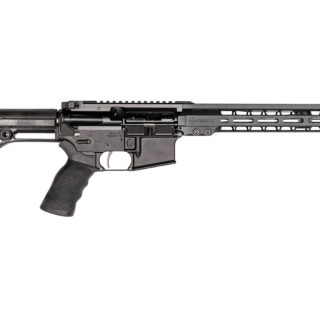 M-15 13 COMPETITION RIFLE
Rated 0 out of 5
M-15 13 COMPETITION RIFLE
Rated 0 out of 5$2,225.00Original price was: $2,225.00.$2,039.00Current price is: $2,039.00. -
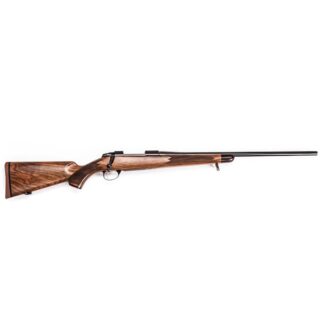 Nosler M48 Heritage Bolt Action Centerfire Rifle
Rated 0 out of 5
Nosler M48 Heritage Bolt Action Centerfire Rifle
Rated 0 out of 5$2,225.00Original price was: $2,225.00.$1,895.00Current price is: $1,895.00. -
 Daniel Defense DDM4 V7 Semi-Auto Rifle
Rated 0 out of 5
Daniel Defense DDM4 V7 Semi-Auto Rifle
Rated 0 out of 5$1,980.00Original price was: $1,980.00.$1,820.00Current price is: $1,820.00. -
 Springfield Armory Standard M1A Semi-Auto Rifle
Rated 0 out of 5
Springfield Armory Standard M1A Semi-Auto Rifle
Rated 0 out of 5$1,900.00Original price was: $1,900.00.$1,720.00Current price is: $1,720.00. -
 IWI Tavor X95 Semi-Automatic Centerfire Rifle
Rated 0 out of 5
IWI Tavor X95 Semi-Automatic Centerfire Rifle
Rated 0 out of 5$1,850.00Original price was: $1,850.00.$1,690.00Current price is: $1,690.00. -
 MARLIN 336 TACTICAL 30/30WIN
Rated 0 out of 5$1,509.99
MARLIN 336 TACTICAL 30/30WIN
Rated 0 out of 5$1,509.99
SKS rifle? If you explore any gun auction catalog or browse the internet looking for semi-automatic rifles, you are bound to come across one the many variations of SKS rifles that exist in the marketplace. With dozens of countries using them for the past 70 years, finding one is no challenge, but if you want a specific type or version that has been unaltered, that is a different story.
SKS For Sale
In the early 1990s, the Clinton administration prohibited the importation of SKS rifles for sale. However, because this consignment of early production rifles had been held outside of China for more than 20 years, an import exception was allowed.
What can you expect? The Grade 2 Rifle is representative of the average rifle from the shipment, and all external serialized parts are identical to the receiver. These used surplus sks rifles are more than 50 years old and have been stored in heavy cosmoline. Threaded receivers, spike bayonets, and chrome lined barrels are all features of early production rifles. SKS For Sale, We should also mention that there is a lot of grease involved. As a result, take extra caution when cleaning and inspecting before firing.
The technical specifications of the for sale sks
The SKS on offer is a Soviet semi-automatic carbine chambered in 7.62x39mm. The Tula Arsenal produced the SKS-45 from 1945 to 1958. Between addition, in 1953 and 1954, Buy SKS, at Izhevsk Arsenal. As a result, the Soviet Union produced around 2.7 million carbines in all. The SKS carbine was phased out of front-line duty in the early 1950s, and the AK-47 was introduced. The SKS for sale, on the other hand, remained in second-line service for decades.
Today, it is still used as a ceremonial weapon. The SKS rifle was widely exported and was also produced under license, SKS for Sale Online
The Karabiner S was the name given to the East German variant. The Albanians refer to it as the Model 561, and the North Koreans refer to it as the “Type 63.” In many nations, the SKS is a popular hunting and marksmanship semi-automatic rifle on the civilian surplus market. Where to Buy SKS, The United States, Canada, and New Zealand are among them. The age and quantities of the SKS for sale make it a comparatively reasonable investment. Its steel cased 7.6239mm ammunition is currently one of the most affordable center fire cartridges available. The SKS was the first gun to use the 7.62x39mm (M43) ammunition.
Nosler M21 Bolt Action Centerfire Rifle
Nosler M21 Bolt Action is a new rifle for the next decade. Filled with cutting edge features including a wire EDM machined receiver, nitride coated, fluted bolt, TriggerTech trigger, Shilen match grade stainless steel barrel, and a McMillan carbon fiber stock, the Model 21 is sure to appeal to hunters and shooters all over the country.
The Model 21 is built by riflemen, for riflemen and provides exceptional reliability and packable precision to any hunt—wherever that may be. The heart of the rifle is Nosler’s new Model 21 action, designed in collaboration with Mack Brothers, the reputable South Dakota sibling duo with a growing reputation for building some of the finest rifle actions in the industry.
Most notably, their popular EVO action has built an impressive following among serious precision shooters since its introduction in 2018. The newly designed Model 21 blends the best features of the EVO with unique Nosler-engineered customizations, delivering a solid foundation for peak performance right out of the box.
Nosler M21 Bolt Action Features
- Mcmillan Hunter’s Edge Sporter Stock
- Self Indexing 17-4 SS Recoil lug
- TriggerTech Field model trigger
- Scope and mount not included

Made In United States of America
Nosler M21 Bolt Action Specifications
Product Information
| Action Type | Bolt Action |
| Barrel Finish | Stainless Steel |
| Threaded Muzzle | Yes |
| Front Sight | None |
| Rear Sight | None |
| Hand | Right |
| Frame Material | Steel |
| Frame Finish | Nitride |
| Youth | No |
| Stock Type | Field |
| Stock Material | Carbon Fiber |
| Stock Color | Black/Gray |
| Muzzle Device | Thread Protector |
| Scope Included | No |
| Magazine Style | Internal |
| Length of Pull | 13.5 Inches |
| Fluting | No |
| Country of Origin | United States of America |
| Trigger Type | Trigger Tech Trigger |
| Trigger Pull | 2.2-5.5 Pound |
| Safety | Two Position |
| Included Mounts | No |

A Nosler M21 Bolt Action FOR THE NEXT DECADE
The all-new Nosler Model 21™ is a new rifle for the next decade. Filled with cutting edge features including a wire EDM machined receiver, nitride coated, fluted bolt, TriggerTech trigger, Shilen match grade stainless steel barrel, and a McMillan® carbon fiber stock, the Model 21 is sure to appeal to hunters and shooters all over the country. The Model 21 is built by riflemen, for riflemen and provides exceptional reliability and packable precision to any hunt—wherever that may be. Available in high performance Nosler calibers from 26 to 33, plus popular offerings such as the 6.5 Creedmoor, 308 Win. and 6.5 PRC.
Buy Nosler M21 Bolt Action Online USA
The heart of the rifle is Nosler’s new Model 21 action, designed in collaboration with Mack Brothers, the reputable South Dakota sibling duo with a growing reputation for building some of the finest rifle actions in the industry. Most notably, their popular EVO action has built an impressive following among serious precision shooters since its introduction in 2018. The newly designed Model 21 blends the best features of the EVO with unique Nosler-engineered customizations, delivering a solid foundation for peak performance right out of the box.
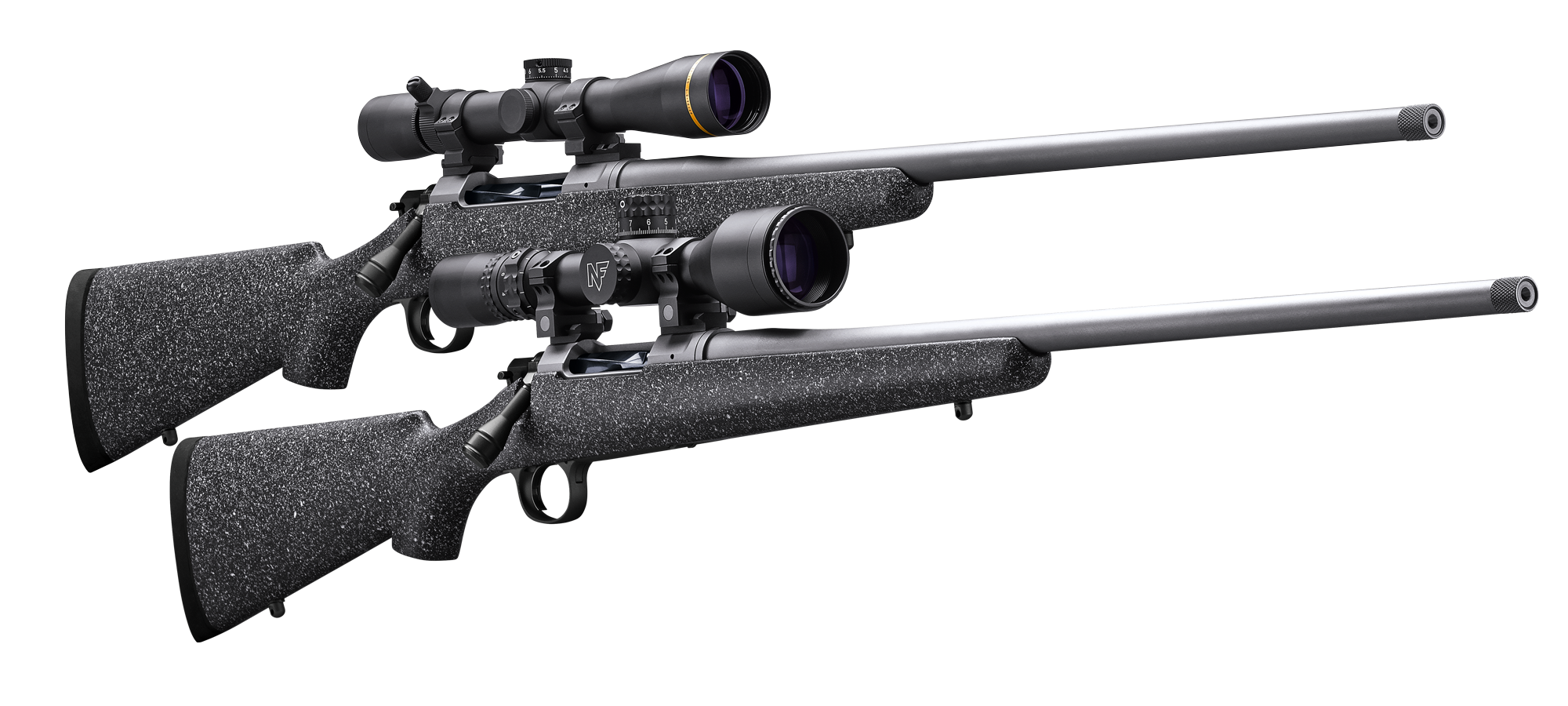
MODEL Nosler M21 Bolt Action
A rifle for the next decade, the new Model 21 is a feature-rich production firearm that has the feel and performance of a custom build. Featuring premium components throughout and weighing roughly 7 pounds depending on the cartridge, the Model 21 rifle brings exceptional precision and packable reliability to any hunt.
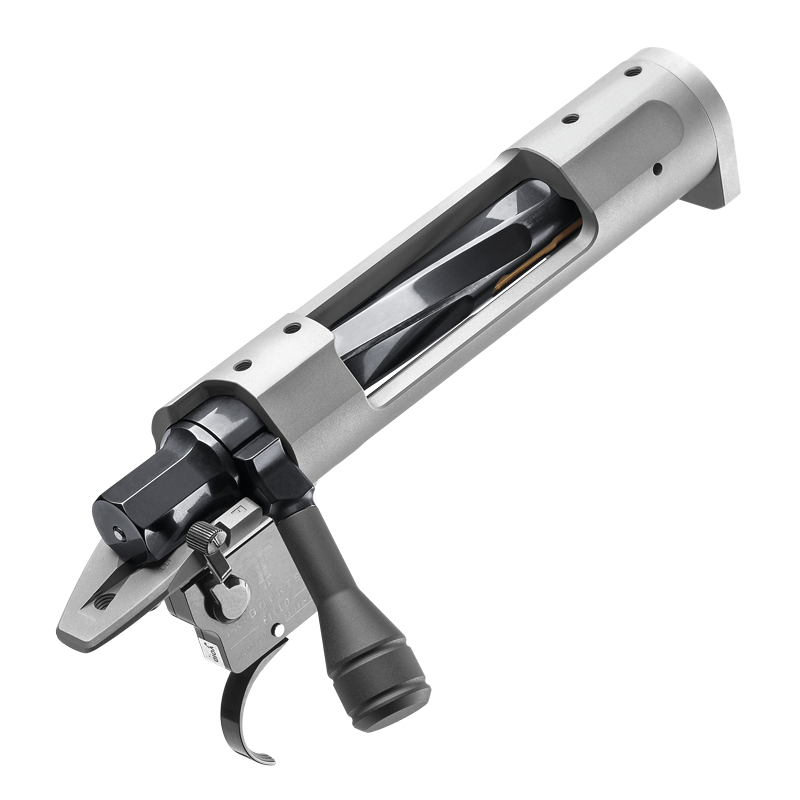
Nosler M21 Bolt Action A PIECE OF THE ACTION
Blueprinted from birth on advanced wire EDM equipment, the Model 21 action was thoughtfully designed to deliver exceptional performance in a user-friendly platform with several built-in custom features throughout. Among these features is a spiral fluted, one-piece, Nitride coated bolt made of 4340 Chrome Moly steel. In addition to a sleek aesthetic, and nearly effortless functioning, the fluted design provides a reduction in weight and helps to channel debris, preventing the bolt from jamming in environments where dirt and sand is an issue. In line with the M21 action’s practical design philosophy, the bolt’s upgraded M16-style extractor and fire control group feature tool-less takedown.
Nosler M21 Bolt Action UPGRADED BOLT
A one-piece bolt body machined from a hardened 4340 Chrome Molybdenum billet. The bolt is fluted to decrease the contact of bolt to receiver which provides for a smooth open and close. To also increase the smooth feel and increase the life of the bolt it is then NIB-X ( Nitride) coated. Using a modified M-16 style extractor provides for excellent extraction while using a tool-less design for disassembly and cleaning. The bolt handle is threaded 5/16-24 TPI for change out to many popular bolt handle configurations.
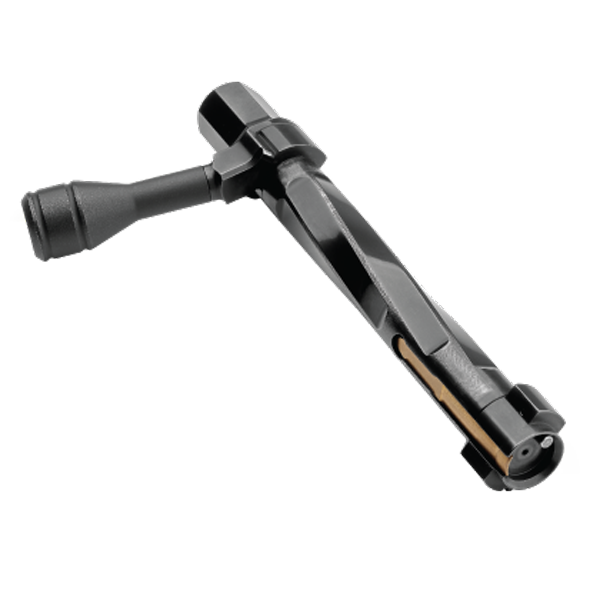
MCMILLAN® HUNTERS EDGE® SPORTER STOCK
When hunters think of a strong, dependable yet lightweight stock, the #1 material they think of is Carbon Fiber, and McMillan® is synonymous with accuracy, reliability and strength. The McMillan® HUNTERS EDGE® SPORTER stock on the M21 is constructed of 100% carbon fiber to ensure dependability while maintaining the ultra-light feel so many hunters desire. Included for strength are Aluminum pillars and a 1” recoil pad that is set at a standard 13.5” LOP. Painted in an all-weather epoxy style paint to guard your rifle from all the elements you may encounter.
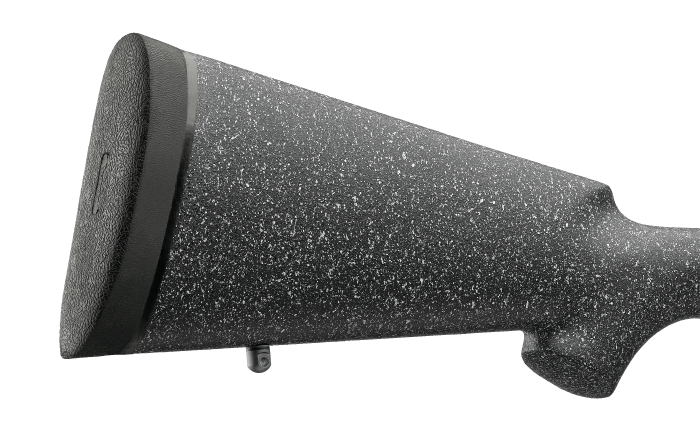
Nosler M21 Bolt Action ADDITIONAL FEATURES
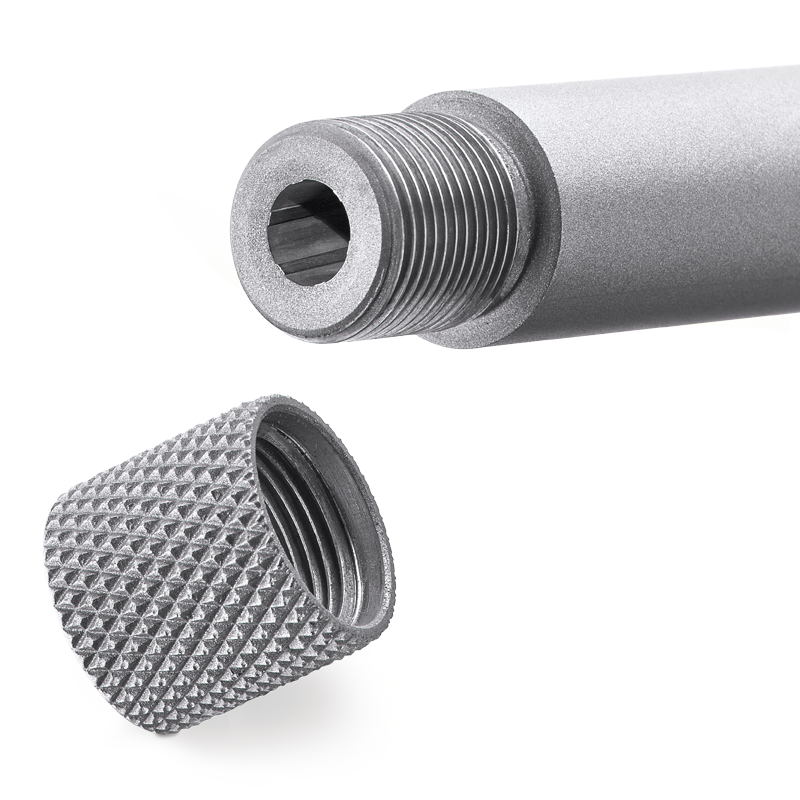
Nosler M21 Bolt Action BARREL FEATURES
Each barrel features a precision recessed crown with a threaded muzzle (1/2-28 or 5/8-24 Tpi). Comes with easy to remove knurled thread protector.
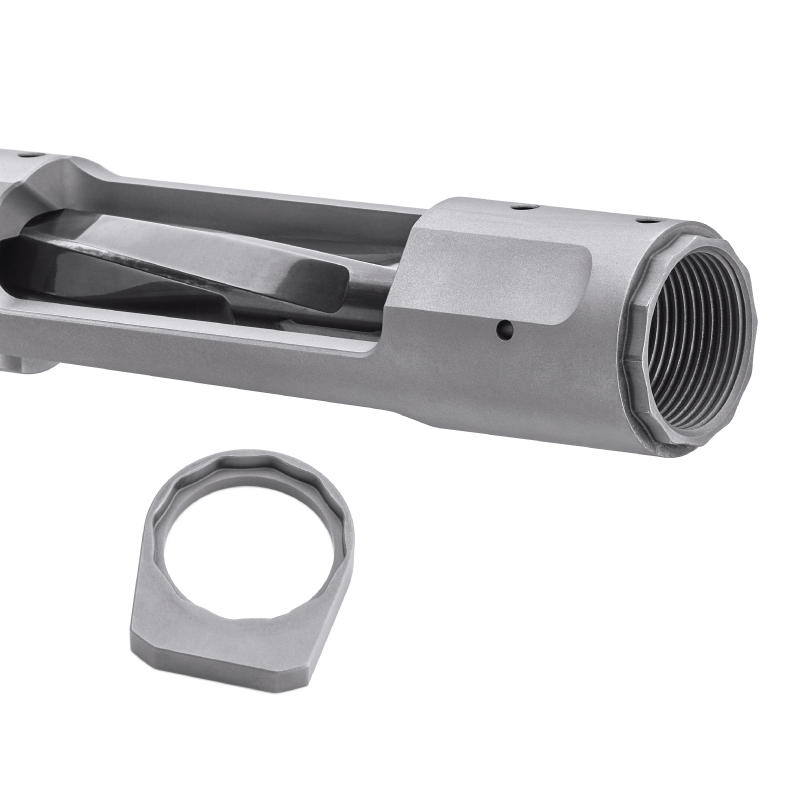
Nosler M21 Bolt Action RECOIL LUG FEATURES
Self-indexing 17-4 SS recoil lug, which eliminates recoil lug alignment issues and increases thread shank length for added barrel support.
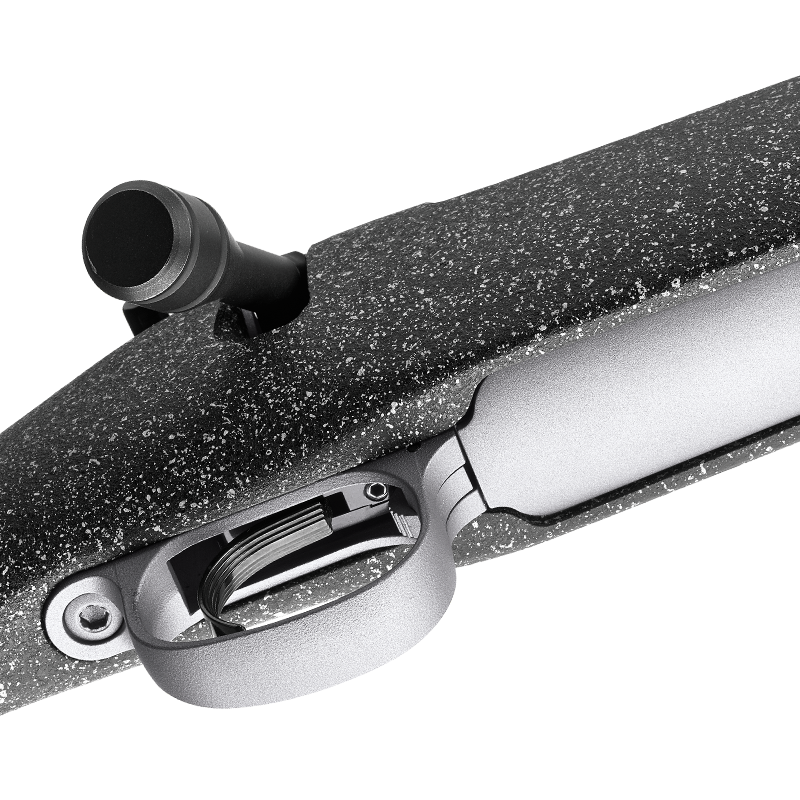
Nosler M21 Bolt Action TRIGGER FEATURES
The Model 21 features a TriggerTech Field model trigger that is externally user adjustable from 2.5-5.5lbs. Designed to operate in the harshest environments imaginable, TriggerTech triggers utilize Frictionless Release Technology™ and will continue to perform when other triggers fail.
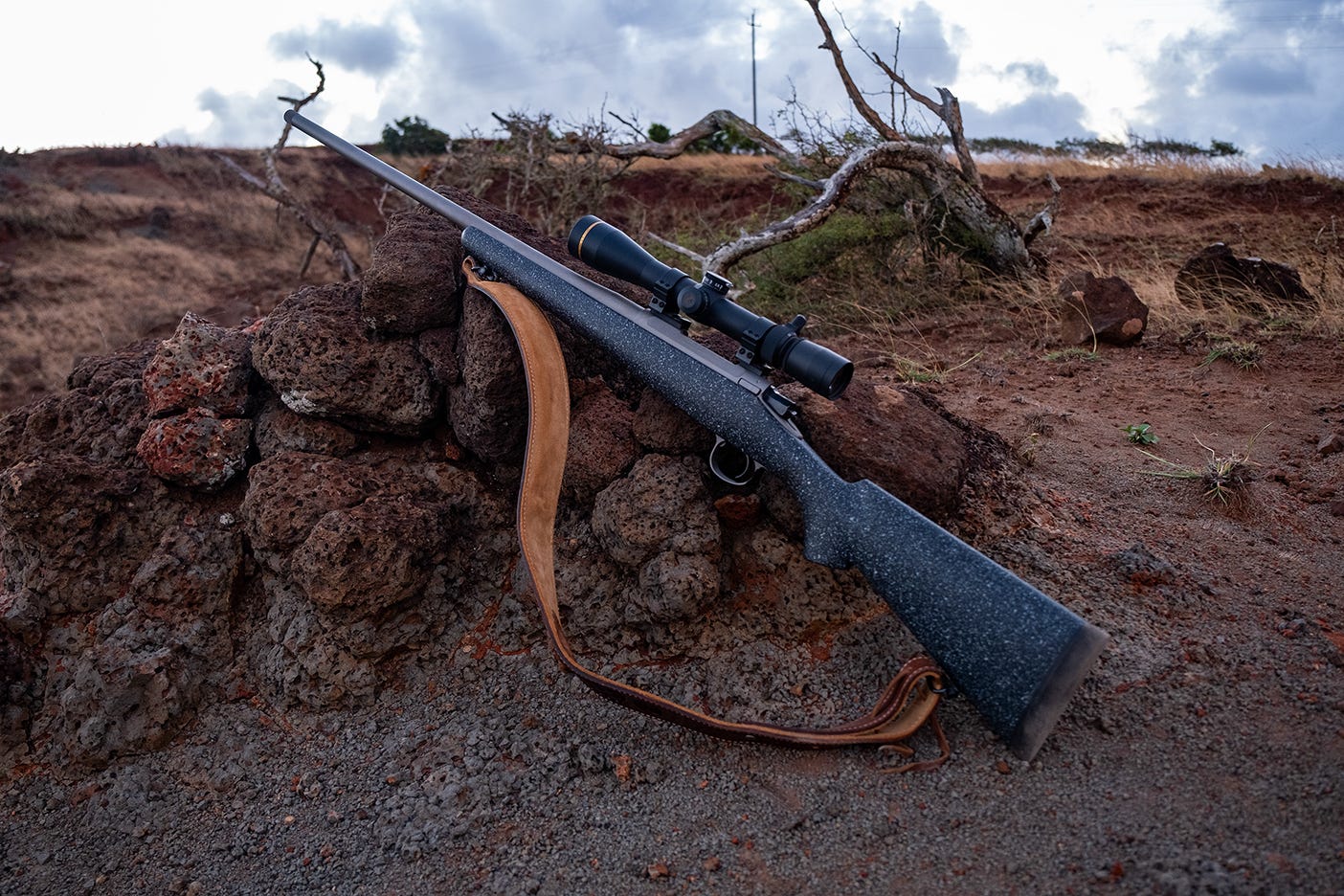
Nosler M21 Bolt Action General Specifications
| PART # | CARTRIDGE | BBL LENGTH | OAL | APPROX WEIGHT | MAG CAP | ACTION LENGTH | TWIST | BBL CONTOUR | LOP |
|---|---|---|---|---|---|---|---|---|---|
| 40121 | 6.5 Creedmoor | 22″ | 41.625″ | 6.8 lbs | 4 | Short | 1:8 | #3 | 13.5″ |
| 40321 | 26 Nosler | 24″ | 44.5″ | 7.1 lbs | 3 | Long | 1.8 | #3 | 13.5″ |
| 40421 | 27 Nosler | 24″ | 44.5″ | 7.1 lbs | 3 | Long | 1:8.5 | #3 | 13.5″ |
| 40521 | 280 Ackley Improved | 24″ | 44.5″ | 7.1 lbs | 4 | Long | 1:9 | #3 | 13.5″ |
| 40621 | 28 Nosler | 24″ | 44.5″ | 7.1 lbs | 3 | Long | 1:9 | #3 | 13.5″ |
| 40721 | 308 Win | 22″ | 41.65″ | 6.8 lbs | 4 | Short | 1:10 | #3 | 13.5″ |
| 40821 | 300 Win Mag | 24″ | 44.5″ | 7.1 lbs | 3 | Long | 1:10 | #3 | 13.5″ |
| 40921 | 30 Nosler | 24″ | 44.5″ | 7.1 lbs | 3 | Long | 1:10 | #3 | 13.5″ |
| 41021 | 33 Nosler | 24″ | 44.5″ | 7.1 lbs | 3 | Long | 1:10 | #3 | 13.5″ |
| 42021 | 375 H&H Mag | 22″ | 42.5″ | 7.0 lbs | 3 | Long | 1:12 | #5 | 13.5″ |
Nosler M21 Bolt Action TAGS
, 7.62×39 wolf , 380 ammo bulk 1000, .45 bulk ammo, how much does 1000 rounds of 7.62 weight, .223 ammo bulk, magtech 9mm 1000 rounds – free shipping, bulk ammo 30-30, 556 ammo green tip, bulk ammo.com review, winchester ballistic silvertip 308 150 grain for sale, winchester ballistic silvertip 300 win mag, federal 308 brass, 20 foot short mag, winchester 22-250 ammo 45 grain, incendiary 9mm, winchester 30-06 accubond ct 180 gr, 7mm08 federal fusion in stock, 22-250 winchester 45 grain jhp, 308 bulk ammo, bulk ammo 9mm, 7.62×39 bulk ammo, 9mm 1000 rounds, 45 acp bulk ammo, 1000 9mm rounds, .308 ammo, 9mm 1000, federal 223 ammo – 1000 rounds, 22 ammo 1000 rounds, 1000 rounds 556, bulk 9mm, .223 bulk ammo, 5.56 bulk ammo 5000 rounds, buy bulk ammo, bulk ammo 7.62×39, 5.56, 45 acp ammo, 7.62 x39, ammo for sale, 10mm ammo, .223 ammo,
Nosler M21 Bolt Action
In the event that you are searching for mass ammo, you went to the right site! We highly esteem offering unquestionably the best arrangements to the most genuine shooters for mass handgun ammunition, mass rifle ammunition, mass shotgun ammunition, and mass rimfire ammunition.
Look at our huge determination of in-stock ammo. We convey every one of the most famous types and a gigantic determination of more specialty types as well. Anything you desire, we have it estimated modest and prepared to transport quick.
Ten consecutively serial numbered Yugoslavian Zastava Model 59/66 SKS rifles with shipping Crate and accessories.
History of the SKS Rifle
The original SKS rifle was designed by Sergei Gavrilovich Simonov which is why SKS stands for “Self-Loading Carbine of the Simonov System.” Manufactured in 1945, the SKS rifle became the primary military rifle used by the Soviet Union replacing the previously popular and long serving Mosin-Nagant. The predecessor had its flaws with weight and heavy recoil due to its excessively powerful ammo. A lighter and more controllable option needed to be explored.
An Izhevsk Model 91/30 Mosin-Nagant sniper rifle.
Simonov was no stranger to the world of firearms and had already designed a select fire rifle for Russia called the AVS-36 in 1936. AVS loosely translates to “Automatic Rifle of the Simonov System.” The requirements for the AVS rifle were similar to the SKS: a moderate capacity magazine on a fast and dependable gun. The rifle could fire as a semi-automatic, but being primitive in nature, it was hard to control as it still relied on the 7.62x54R cartridge, causing it to be lackluster in accuracy. It was not the most user friendly firearm with complicated locking system and its inability to avert dirt from entering gun’s inner workings. Its many parts made it both time consuming to manufacture and difficult for troops to maintain.
A Soviet Tula Arsenal SKS carbine with crate and a Chinese Norinco Model SKS M carbine.
In the early 1940s, Simonov undertook the challenge of improving upon the AVS to correct its major shortcomings. Chambering the new gun in 7.62×39mm gave it medium firepower and the ability to load the box magazine with a stripper clip cut back on reloading time. The SKS rifle was gas operated with a tilting bolt locking system for safety with the original design sporting a spring-loaded firing pin, but other country’s adaptations of the SKS adjusted the firing mechanism. The barrels of SKS rifles were typically chrome lined to prevent excessive wear-and-tear due to weather and use. All Soviet SKS military models had a standard issue 180 degree folding bayonet connected on the underside of the barrel. Although this is not necessary for uses today, it was a requirement for military rifles at the time.
The SKS rifle was an improvement, but it was not a prime example for accuracy and craftsmanship of the 1940s. Even so, the government liked it because it was easy to use, maintain, and manufacture. It also was cheap and fast to produce for the large numbers of Russian troops.
A Norinco SKS semi-automatic rifle, serial number 001.
Very few SKS-45 rifles actually saw use in World War II due to the end of the war coming so soon after the rifle’s creation, but a select number of rifles were produced and used against Germany in the last months of World War II as a trial for the new and experimental gun. Unfortunately for the Soviet SKS rifle, it saw a very short run after its mass government production in 1948-49 by Tula Arsenal. The AK-47 proved to be a better weapon for the Soviets having all the good qualities of the SKS plus being capable of full-auto fire. Tula Arsenal still produced the rifle for the civilian market until 1955.
A Norinco SKS paratrooper carbine sold for 1,955 at RIAC in March of 2021. The SKS paratrooper differs from a standard SKS in that it has a cut down barrel.
The SKS Rifle Around the World
Luckily for the classic gun, instead of being lost to history, other countries began to adapt the SKS rifle. China led production with millions and millions of SKS rifles and used them from the early 1950s into the late 1970s. The “People’s War”, the Chinese Civil War and The Vietnam War were fought mainly with Chinese-made SKS rifles. The People’s Liberation Forces used the rifle for decades to protect themselves and their villages.
Scarce East German SKS rifle with sling and 7th Army Vietnam war capture papers.
During the Cold War, the Soviet Union gave its allies the SKS rifle manufacturing plans. This gave countries like Albanian, Yugoslavia, and Romania the ability to produce a large numbers of SKS rifles. North Vietnam and East Germany also made SKS rifles, but in small quantities making them very rare today.
Even as recently as the early 2010s, some forces around the world have been seen carrying SKS rifle variations. Countries like Cambodia, Vietnam, and North Korea still like the weapon and assign it for their military personnel.
Why is the SKS Rifle Popular?
The SKS rifle is a battle-proven gun with a classic look. Its wooden stock is a sign to many of a traditional, reliable, and ready-to-use rifle. It is not hard to find an SKS in great condition with little wear and tear, at an attractive price since so many were produced. People aren’t purchasing the SKS rifle for looks in many cases however, but instead for its function and price point.
A Yugoslavian M59/66 SKS Semi-Automatic Rifle sold for $1,293 at Rock Island Auction Company.
The ammunition for the SKS is one of the cheapest centerfire choices on the market. Chambered in 7.62×39mm, it has power and can take down most common game animals. Most SKS rifles cost around $400 to $1,000 making them an achievable firearm for almost every gun enthusiasts. As for the reliability and capacity of the gun, the SKS rifle is a great option for new gun owners and a fantastic first rifle beyond the 22LR.

The SKS, not surprisingly, is a popular hunting rifle. Due to its known mid-to-longer range ability, the SKS rifle is commonly used to hunt deer. The only downfall in using the gun as a hunting rifle is the lack of a scope or ability to mount one. The original design was created with an iron sight only. With anything around 50-100 yards, a person should be fine using the sight alone, but some hunters like the peace of mind and versatility of having a scope.
A Soviet Izhevsk Russian SKS 1954r sold for $1,380 in June of 2018.
Why Do People Modify SKS Rifles?
Modifying a firearm to fit a need or make an improvement for personal use is less of a big deal on modern firearms, but in classic or collectible firearms it can be an important choice. Especially if a person plans to one day resell it and expects the same price as an original example of the same gun. Some modifications may be necessary, and even encouraged, if a gun is in disrepair and needs to be refinished and or repaired. Bubbaing however, the common practice of taking an old gun and adding extraneous paint, accessories, or attachments on to it to make it “cool” or “interesting” often ventures beyond the realm of functionality, good taste, and aesthetics. Bubbaing is not necessarily bad if a person does it to a non-historic or non-valuable gun that he or she plans to use. Unnecessary modifications are not an advised practice by any gun experts or authorities who wants to maintain originality.
In the case of the SKS, bubbaing is all too wide spread on any and all variations of the gun. Before the 1994 “Assault Weapon Ban”, purchasing an SKS would cost you well under $100 for a nice quality and good condition gun. When you can get a gun at that low of a price, the firearm modifiers of the world, both good and bad, flock and take the opportunity for all its worth. Some people just enjoy tinkering with their guns and will add anything to put their “personal” touch on it. SKS modifications tend to happen to the barrel with additions like scopes and some even add a homemade buttpad extensions. Painting or trying to improve the wood’s finish is another common SKS modification. Some refinished SKS rifles looks pretty sharp when done by a seasoned gunsmith or professional.
A Tula Arsenal SKS rifle dated “1954”.
As mentioned earlier, one downfall of the SKS that turns some people away is its lack of a scope or a way to mount one. To the DIYers of firearms, they don’t worry about this and simply add a mount and a scope. Does this increase the usability of the guns and perhaps the desirability of the SKS? Perhaps, but why not just invest in a different gun without collector value or any other milsurp that does not require permanent modification to mount an optic?
A Chinese Type 56 SKS rifle with documented Vietnam War U.S.M.C. capture papers sold for $4,025 at Rock Island Auction Company in December 2017.
The main issue when a person modifies a SKS rifle, or any classic gun for that matter, is that only decreases the value. Putting on a scope or other accessories takes away from the originality of the firearm. With old guns like an original SKS, it is highly frowned upon to alter them. If a person doesn’t care about resale value or originality, altering a gun is a more acceptable. Just don’t try and sell the gun later and expect the price to be the same as untouched SKS rifles.
A Chinese Type 53 Mosin-Nagant carbine considered to be a pre-production trial example, bearing serial number A000001 as manufactured in 1953. Historian Lin Xu stated, “It should be one of the very first pre-production rifles off the production line.”
All in all, experts and specialists do not advise altering a gun if maintaining value and originality is of concern.
SKS rifle for Sale
Rock Island Auction Company frequently offers Russian rifles for sale like the SKS, Mosin Nagant, the SVT rifle, and the PPSh-41. Check out the weekly Rock Island Auction newsletter for fresh gun blogs and gun videos highlighting WW2 era firearms like the FG42, the MP40, and more.

SKS (Russian: Самозарядный карабин системы Симонова, romanized: Samozaryadny Karabin sistemy Simonova, 1945, self-loading carbine of (the) Simonov system, 1945) is a semi-automatic rifle designed by Soviet small arms designer Sergei Gavrilovich Simonov in 1945.
The SKS was first produced in the Soviet Union but was later widely exported and manufactured by various nations. Its distinguishing characteristics include a permanently attached folding bayonet and a hinged, fixed magazine. As the SKS lacked select-fire capability and its magazine was limited to ten rounds, it was rendered obsolete in the Soviet Armed Forces by the introduction of the AK-47 in the 1950s. Nevertheless, SKS carbines continued to see service with the Soviet Border Troops, Internal Troops, and second-line and reserve army units for decades.
The SKS was manufactured at Tula Arsenal from 1945 to 1958, and at the Izhevsk Arsenal from 1953 to 1954, resulting in a total Soviet production of about 2.7 million. Throughout the Cold War, millions of additional SKS carbines and their derivatives were also manufactured under license in the People’s Republic of China, as well as a number of countries allied with the Eastern Bloc. The SKS was exported in vast quantities and found favour with insurgent forces around the world as a light, handy weapon which was adequate for guerrilla warfare despite its conventional limitations. Beginning in 1988, millions were also sold on the civilian market in North America, where they remain popular as hunting and sporting rifles.
Design[edit]
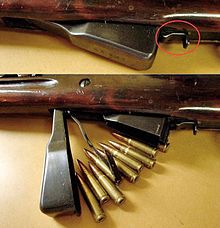


The SKS has a conventional layout, with a wooden stock and rifle grip. It is a gas-operated rifle that has a spring-loaded bolt carrier and a gas piston operating rod that work to unlock and cycle the action via gas pressure exerting pressure against them. The bolt is locked to contain the pressure of ignition at the moment of firing by tilting downwards at its rear and being held by a lug milled into the receiver. At the moment of firing, the bolt carrier is pushed rearwards, which causes it to lift the bolt, unlocking it, and allowing it to be carried rearwards against a spring. This allows the fired case to be ejected and a new round from the magazine to be carried into the chamber. The SKS represents an intermediate step in the process towards the development of true assault rifles, being shorter and less powerful than the semi-automatic rifles that preceded it, such as the Soviet SVT-40, but being longer (by 10 cm/4 in) than AK-series rifles which replaced it. As a result, it has a slightly higher muzzle velocity than those arms that replaced it.
The SKS’s ten-round internal box magazine can be loaded either by hand or from a stripper clip. Cartridges stored in the magazine can be removed by pulling back on a latch located forward of the trigger guard (thus opening the “floor” of the magazine and allowing the rounds to fall out).[3] In typical military use, the stripper clips are disposable. If necessary, they can be reloaded multiple times and reused.
While early (1949–50) Soviet models had spring-loaded firing pins, which held the pin away from cartridge primers until struck by the action’s hammer, most variants of the SKS have a free-floating firing pin within the bolt. Because of this design, care must be taken during cleaning (especially after long storage packed in cosmoline) to ensure that the firing pin can freely move and does not stick in the forward position within the bolt. SKS firing pins that are stuck in the forward position have been known to cause accidental “slamfires” (the rifle firing on its own, without pulling the trigger and often without being fully locked). This behavior is less likely with the hard primer military-spec ammo for which the SKS was designed, but as with any rifle, users should properly maintain their firearms. For collectors, slamfires are more likely when the bolt still has remnants of cosmoline embedded in it that retards firing pin movement. As it is triangular in cross section with only one way to properly insert it (notches up), slamfires can also result if the firing pin is inserted in one of the other two orientations.
In most variants (Yugoslav models being the most notable exception), the barrel is chrome-lined for increased wear and heat tolerance from sustained fire and to resist corrosion from chlorate-primed corrosive ammunition, as well as to facilitate cleaning. Chrome bore lining is common in military rifles. Although it can diminish precision, its effect on practical accuracy in a rifle of this type is limited.
The front sight has a hooded post. The rear sight is an open notch type which is adjustable for elevation from 100 to 1,000 metres (110 to 1,090 yd). There is also an all-purpose “battle” setting on the sight ladder (marked “П”, for “Прямой выстрел”, meaning “Straight shot”), set for 300 metres (330 yards). This is attained by moving the elevation slide to the rear of the ladder as far as it will go.[3][4] The Yugoslav M59/66A1 has folddown luminous sights for use when firing under poor light conditions, while the older M59 and M59/66 do not.[3]
All military SKSs have a bayonet attached to the underside of the barrel, which is extended and retracted via a spring-loaded hinge. Both blade and spike bayonets were produced.[3] Spike bayonets were used on the 1949 Tula Russian SKS-45, the Chinese Type 56 from mid 1964 onward, and the Albanian Model 561. The Yugoslavian-made M59/66 and M59/66A1 variants are the only SKS models with an integral grenade launching attachment.[3]
The SKS is easily field stripped and reassembled without specialized tools, and the trigger group and magazine can be removed with an unfired cartridge, or with the receiver cover. The rifle has a cleaning kit stored in a trapdoor in the buttstock, with a cleaning rod running under the barrel, in the same style as the AK-47. The cap for the cleaning kit also serves as a cleaning rod guide, to protect the crown from being damaged during cleaning. The body of the cleaning kit serves as the cleaning rod handle. In common with some other Soviet-era designs, it trades some accuracy for ruggedness, reliability, ease of maintenance, ease of use, and low manufacturing cost.
Development history[edit]
During World War II, many countries realized that existing rifles, such as the Mosin–Nagant, were too long and heavy and fired powerful cartridges that were effective in medium machine guns with a range in excess of 2,000 metres (2,200 yd), creating excessive recoil. These cartridges, such as the 8×57mm Mauser, .303 British, .30-06 Springfield, and 7.62×54mmR were effective in rifles to ranges of up to 1,000 metres (1,100 yards); however, it was noted that most firefights took place at maximum ranges of between 100 and 300 metres (110 and 330 yards). Only a highly trained specialist, such as a sniper, could employ the full-power rifle cartridge to its true potential. Both the Soviet Union and Germany realized this and designed new firearms for smaller, intermediate-power cartridges. The U.S. fielded an intermediate round in the .30 (7.62 mm) U.S., now known as the .30 Carbine; used in the M1 carbine, it was widely used by American forces in WWII but was much weaker than German and Soviet intermediate rounds, and was never intended to replace the .30-06 rifle cartridge.
The German approach was the production of a series of intermediate cartridges and rifles in the interwar period, eventually developing the Maschinenkarabiner, or machine-carbine, which later evolved into the Sturmgewehr 44, which was produced in large numbers during the war, and chambered in the 7.92×33mm Kurz intermediate round.
The Soviet Union type qualified a new intermediate round in 1943, at the same time it began to field the Mosin–Nagant M44 carbine as a general issue small arm. However, the M44, which had a side-folding bayonet and shorter overall length, still fired the full-powered round of its predecessors. [5][dubious – discuss]
Design-wise, the SKS relies on the AVS-36 (developed by the same designer, Simonov) to a point that some consider it a shortened AVS-36, stripped of select-fire capability and re-chambered for the 7.62×39mm cartridge.[6] This viewpoint is problematic, as the AVS uses a sliding block bolt locking device, while the SKS employs a more reliable tilting-bolt design inherited from the PTRS-41, which was itself taken from SVT-40. The bolt mechanism is one of the defining features of a rifle, having a different bolt means the SKS and AVS merely appear similar in layout, while differing vastly in bolt lockup, caliber, size, and that one has a fixed magazine and the other has a detachable magazine. It also owes a debt to the M44, incorporating the carbine size and integral bayonet.
In 1949, the SKS was officially adopted into the Soviet Army, manufactured at the Tula Armory from 1949 until 1955 and the Izhevsk Mechanical Plant in 1953 and 1954. Although the quality of Soviet carbines manufactured at these state-run arsenals was quite high, its design was already obsolete compared to the Kalashnikov which was selective-fire, lighter, had three times the magazine capacity, and had the potential to be less labor-intensive to manufacture. Gradually over the next few years, AK-47 production increased until the extant SKS carbines in service were relegated primarily to non-infantry and to second-line troops. They remained in service in this fashion even as late as the 1980s, and possibly the early 1990s. The SKS was the standard service rifle used by Soviet Air Defence Forces to guard Anti-Aircraft sites until at least the late 1980s. To this day, the SKS carbine is used by some ceremonial Russian honor guards, much the same way the M14 Rifle is within the United States.
During the Cold War, the Soviet Union shared the SKS design and manufacturing details with its allies, and as a result, many variants of the SKS exist. Some variants use gas port controls, flip-up night sights, and prominent, muzzle-mounted grenade launchers (Yugoslav M59/66, possibly North Korean Type 63). In total, SKS rifles were manufactured by the Soviet Union, China, Yugoslavia, Albania, North Korea, North Vietnam, East Germany (Kar. S) and Romania (Model 56). Physically, all are very similar, although the NATO-specification 22mm grenade launcher of the Yugoslav version, and the more encompassing stock of the Albanian version are visually distinctive. Many smaller parts, most notably the sights and charging handles, were unique to different national production runs. A small quantity of SKS carbines manufactured in 1955–56 was produced in China with Russian parts, presumably as part of a technology sharing arrangement. The vast majority of Yugoslav M59 and M59/66s have elm, walnut and beech stocks. Russian SKS’s had stocks of Arctic Birch (or “Russian Birch”), and the Chinese were of Catalpa wood (“Chu wood”).[7]
In terms of production numbers, the SKS was the ninth most produced self-loading rifle design in history.[8] While remaining far less ubiquitous than the AK-47, both original Soviet rifles and foreign variants can still be found today in civilian hands as well as in the arsenals of insurgent groups and paramilitary forces around the world.[8] The SKS has been circulated in up to 69 countries, both by national governments and non-state actors.[9] In 2016, it was still being widely circulated among civilians and non-state actors in at least five of those countries and remained in the reserve and training inventories of over 50 national armies.[9]
The SKS was to be a gap-filling firearm manufactured using the proven operating mechanism design of the 14.5×114mm PTRS-41 anti-tank rifle and using proven milled forging manufacturing techniques. This was to provide a fallback for the radically new and experimental design of the AK-47, in case it was unsuccessful. The original stamped receiver AK-47 had to be quickly redesigned to use a milled receiver which delayed production, and extended the SKS carbine’s service life.
Service history[edit]

A few years after the SKS was brought into service in 1949, it was rendered obsolete for the Soviet military by the new AK-47, which was adopted in increasing numbers by Soviet front-line units throughout the 1950s.[10] The SKS was used by Soviet troops and Hungarian partisans alike during the 1956 Hungarian Revolution.[11][12] Thereafter, while the SKS was retained for various auxiliary duties, it ceased to have any real military significance in the Soviet Union.[10] Only a small number remained in active service, mostly with support units, until the 1980s.[13] However, the SKS found a longer second life in the service of various Soviet-aligned nations, in particular the People’s Republic of China.[10] The Chinese state manufactured it for decades after production had ceased in the Soviet Union, mainly to arm its vast military reserves and militia forces.[10] The SKS was also in general issue with regular units of the People’s Liberation Army (PLA) for thirty years as the Type 56 carbine.[14] In 1978, the typical PLA infantry battalion was armed with 360 Type 56 carbines and 221 Type 56 assault rifles.[15] PLA forces armed primarily with Type 56 carbines fought Soviet troops armed primarily with AK-47s during the Sino-Soviet border conflict.[16][17] During the Sino-Vietnamese War, both sides were armed with a mixture of SKS and Type 56 carbines, as well as AK and Type 56 assault rifles.[15]
Before adopting domestic AK-47 derivatives, a number of non-aligned nations such as Egypt and Yugoslavia adopted the SKS as a standard service rifle.[18][10] The Egyptian Army used the SKS extensively during the Suez Crisis, and a number were captured and evaluated by Western intelligence agencies in the aftermath of that conflict.[11]
Beginning in the 1960s, vast quantities of obsolete and redundant SKS carbines from military reserve stocks were donated by the Soviet Union and the People’s Republic of China to left-wing guerrilla movements around the world.[19] The increasing ubiquity of the SKS altered the dynamics of asymmetric warfare in developing nations and colonial territories, where most guerrillas had previously been armed with bolt-action rifles.[19] For example, the SKS served as one of the primary arms of the Viet Cong during the Vietnam War.[20] The weapon type was encountered so frequently by the United States Armed Forces in Vietnam that captured examples were used by opposing force (OPFOR) units during training exercises designed to simulate battlefield conditions there as early as 1969.[21] Captured SKS carbines were also prized as war trophies among individual US military personnel, and a number were brought back to the United States by returning veterans over the course of the Vietnam conflict.[22]
The SKS found particular favour in southern Africa, where it was used by a number of insurgent armies fighting to overthrow colonial rule in Angola,[23] Rhodesia (Zimbabwe),[24] and South West Africa (Namibia).[25] The National Union for the Total Independence of Angola (UNITA) used the Type 56 Chinese variant during its long-running insurgency against the postcolonial Angolan government from 1975 to 2002.[26] The SKS was also used in large quantities by uMkhonto we Sizwe (MK), armed wing of the African National Congress (ANC) in South Africa.[27] Between 1963 and 1990, the Soviet Union shipped 3,362 SKS carbines to MK through the guerrillas’ external sanctuaries in Angola and Tanzania.[28] SKS carbines captured from MK by the South African security forces were used to arm militias of the Inkatha Freedom Party (IFP) during its internal power struggle with the ANC in the 1980s and 1990s.[29]
A number of Type 56 carbines were acquired and used alongside the more ubiquitous AK-pattern rifles by the Provisional Irish Republican Army during the Troubles.[30] During the Dhofar Rebellion, SKS carbines were smuggled into Oman by sea, most likely by the Soviet bloc, to arm Popular Front for the Liberation of Oman (PFLO) insurgents there.[31] The Communist Party of Thailand (CPT) used the SKS during its insurgency until the early 1980s, when it ceased militant operations.[32] Cuban and Grenadian military forces used SKS carbines during the 1983 US invasion of Grenada.[33] The US Army captured 4,074 SKS carbines during the invasion, mostly from arms depots.[34]
By the early 1980s, the SKS had been almost entirely superseded in worldwide military service by the AK-47 and its derivatives.[35] The increasing proliferation of cheap AK-pattern rifles in most asymmetric conflicts also ended the popularity of the SKS as a standard guerrilla arm.[35] At that time, the majority of the remaining carbines still in active use were being issued to state-sponsored militias and other paramilitary formations for internal security duties.[35] Following the dissolution of the Soviet Union, SKS carbines proliferated in various civil wars and regional conflicts throughout the former Soviet republics, including the War in Abkhazia,[36] War of Dagestan,[37] and the war in Donbas.[38] In 2016, the SKS remained in the reserve stockpiles of over 50 national armies, mostly in sub-Saharan Africa and the former Soviet bloc.[9]
Variants[edit]
After World War II, the SKS design was licensed or sold to a number of the Soviet Union’s allies, including China, Yugoslavia, Albania, North Korea, North Vietnam, East Germany, Romania, Bulgaria[39] and Poland. Most of these nations produced nearly identical variants, with the most common modifications being differing styles of bayonets and the 22 mm rifle grenade launcher commonly seen on Yugoslavian models.
Soviet[edit]
Differences from the “baseline” late Russian Tula Armory/Izhevsk Armory SKS:
- Variations (1949–1958): Early Spike-style bayonet (1949) instead of blade-style. Spring-return firing pin was present on early models, and they did not have chrome bores (1949 – early 1951). The gas block had three changes: The first production stage gas block, used from 1949 through early 1950, was squared-off at a 90-degree angle. The second gas block production stage was instead cut at a 45-degree angle, seen on late 1950 to 1951 rifles. The third and final gas block stage, from 1952 through to 1956, was curved inward slightly toward the action.
- Honor Guard: All-chrome metal parts, with a lighter-colored wood stock.
- OP-SKS. Many military surplus Soviet SKS were converted into hunting rifles by the Molot (“Hammer”) factory in Vyatskiye Polyany (Russian: Вятско-Полянский машиностроительный завод «Молот», English: Vyatskiye Polyany Machine-Building Plant). These were labeled OP (OP = охотничье-промысловый > okhotnich’ye-promyslovyy > “commercial hunting (carbine)”). The OP-SKS continued to be manufactured into the 2000s.[40]
Chinese[edit]

- Type 56 (1956–today): Numerous minor tweaks, including lack of milling on the bolt carrier, partially or fully stamped (as opposed to milled) receivers, and differing types of thumb rest on the take down lever. The Chinese continually revised the SKS manufacturing process, so variation can be seen even between two examples from the same factory. All of the Type 56 carbine rifles have been removed from military service, except a few being used for ceremonial purposes and by local Chinese Militias. Type 56 carbines with serial numbers below 9,000,000 have the Russian-style blade-type folding bayonet, while those 9,000,000 and higher have a “spike” type folding bayonet. Some early examples are known as “Sino-Soviet”, meaning they were produced by China, but with cooperation from Russian “advisers” who helped regulate the factories and provided the design specifications and perhaps even Soviet-manufactured parts.[41] Bangladesh Ordnance Factories produced Type 56 under license until 2006.[42]
- Experimental stamped receiver: Very rare. A small number of Type 56 SKS rifles were manufactured with experimental stamped sheet metal receivers as a cost and weight saving measure but did not enter large scale production.
- Honor Guard: Mostly, but not all, chromed metal parts. Does not generally have the lighter-colored stock as the Soviet Honor Guard variant.
- Type 63, 68, 73, 81, 84: these rifles shared features from several East-Bloc rifles (SKS, AK-47, Dragunov). AK-47 style rotary bolt and detachable magazine. The Type 63 featured a stamped sheet-steel receiver. The Type 81 is an upgraded Type 63 with a three-round burst capability, some of which (Type 81–1) have a folding stock. The Type 84 (known as an SKK) returns to semi-auto fire only, is modified to accept AK-47 magazines, and has a shorter 41 cm (16 in) paratrooper barrel. However, Chinese Type 84s could not accept AK mags without some handfitting, and the mags were serialized. In addition, AK mags don’t work with the SKS bolt-hold-open system, so the Type 84 used a button on top of the bolt carrier to lock it into place.[43]

- Commercial production: Blonde wood (“Chu wood”/”Qiu wood”)[44] stock instead of dark wood, spike bayonet instead of blade, bayonet retaining bolt replaced with a rivet. Sub-variants include the M21, “Cowboy’s Companion”, Hunter, Models D/M, Paratrooper, Sharpshooter, and Sporter.
- Model D rifles used military style stocks and had bayonet lugs (although some were imported eliminated bayonet, and some examples eliminated the lug to meet changing US import restrictions).
- Model M rifles had no bayonet lug and used either a thumb hole or Monte Carlo–style stock. Both Model D and M used AK-47 magazines and as a result had no bolt hold open feature on the rifle.
Other European[edit]
- Romanian M56: Produced between 1957 and 1960. Typically, they are identical or nearly identical to the late Soviet model.
- Polish SKS (ksS): Refurbished Soviet rifles. Polish laminated stocks lack storage area in back of stock for cleaning kit. A few hundred SKS’s were given to Poland by the Soviet Union around 1954. While never adopted for use by combat units, the SKS is still in use in ceremonial units of the Polish Army, Air Force, Navy where they replaced SVT rifles. Honor guards of the Polish Police and Border Guard also use SKS carbines. In Polish service they are known as ksS which stands for karabin samopowtarzalny Simonowa, Simonov’s semi-automatic rifle. These rifles since have been slowly replaced by the new Polish rifle design, the MSBS.
- Yugoslavian PAP M59: Manufactured by Zastava Arms between 1959 and 1966.[45] Barrel is not chrome-lined. PAP stands for “Polu-automatska puška” (Semi-automatic rifle) and the rifle was nicknamed “Papovka”. Otherwise this rifle is nearly identical to the Soviet version. Many were converted to the M59/66 variant during refurbishment.

- Yugoslavian PAP M59/66: Produced between 1967 and 1989. Added 22 mm rifle grenade launcher which appears visually like a flash suppressor or muzzle brake on the end of the barrel. Front sight has a fold-up “ladder” for use in grenade sighting. To raise the grenade sight, the gas port must be manually blocked and the action must be manually cycled—rifle grenades must be fired with special blank cartridges, and this feature helps ensure that the gas pressure is not wasted on cycling the action. The gas port must be manually opened to again allow semi-automatic operation.[46] Barrel was not chrome-lined. Both the grenade launcher and grenade sight are NATO spec. Stock is typically made from beech wood.
- Yugoslavian PAP M59/66A1: Same as above, except with the addition of flip up phosphorescent or tritium night sights.
Other Asian[edit]
- North Korean Type 63:[48] At least three separate models were made. One “standard” model with blade bayonet, and a second with a gas shutoff and a grenade launcher, similar to the M59/66. The North Korean grenade launcher was detachable from the muzzle and the gas shutoff was different from the Yugoslavian model, however.[49] A third model appears to have side-swinging bayonet.[50]
- Vietnamese Type 1: Nearly identical to both the Soviet and early Chinese SKS. These are identified by a small star on the receiver with a 1 in the center. The barrel is chromed, as are many of the internal parts. It is unknown currently whether there are spiked bayonets or only bladed. The stock work is identical to more common SKS variants such as the Soviet and Chinese. These appear to have been either converted Soviet or early production models, or simply cloned from these rifles. They were made in a small arms factory with Chinese assistance located 12 km north of Yên Bái with 6,000 SKS rifles made between 1962 and 1965 when the factory was closed to American bombing raids.[51]
- Vietnamese clone: The Viet Cong manufactured somewhat rudimentary copies of the SKS, which are sometimes seen with crude finish and obvious tool markings.[52]
Leave a Reply